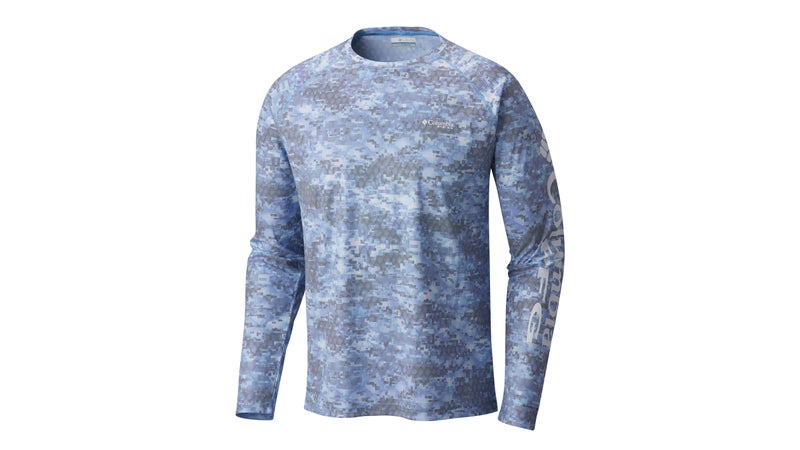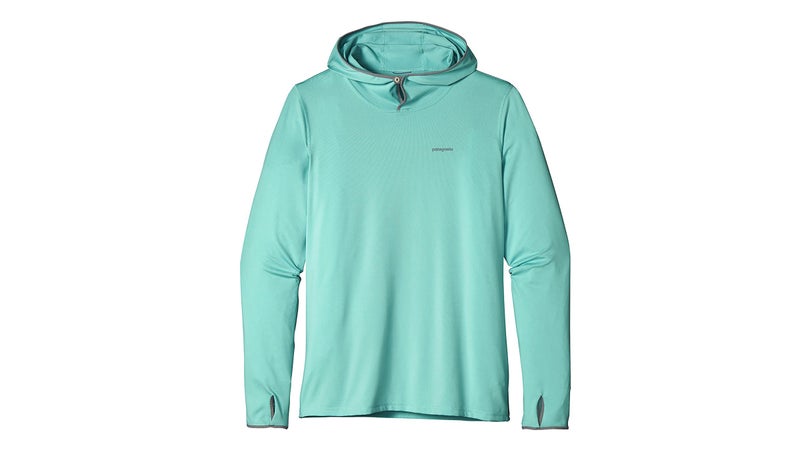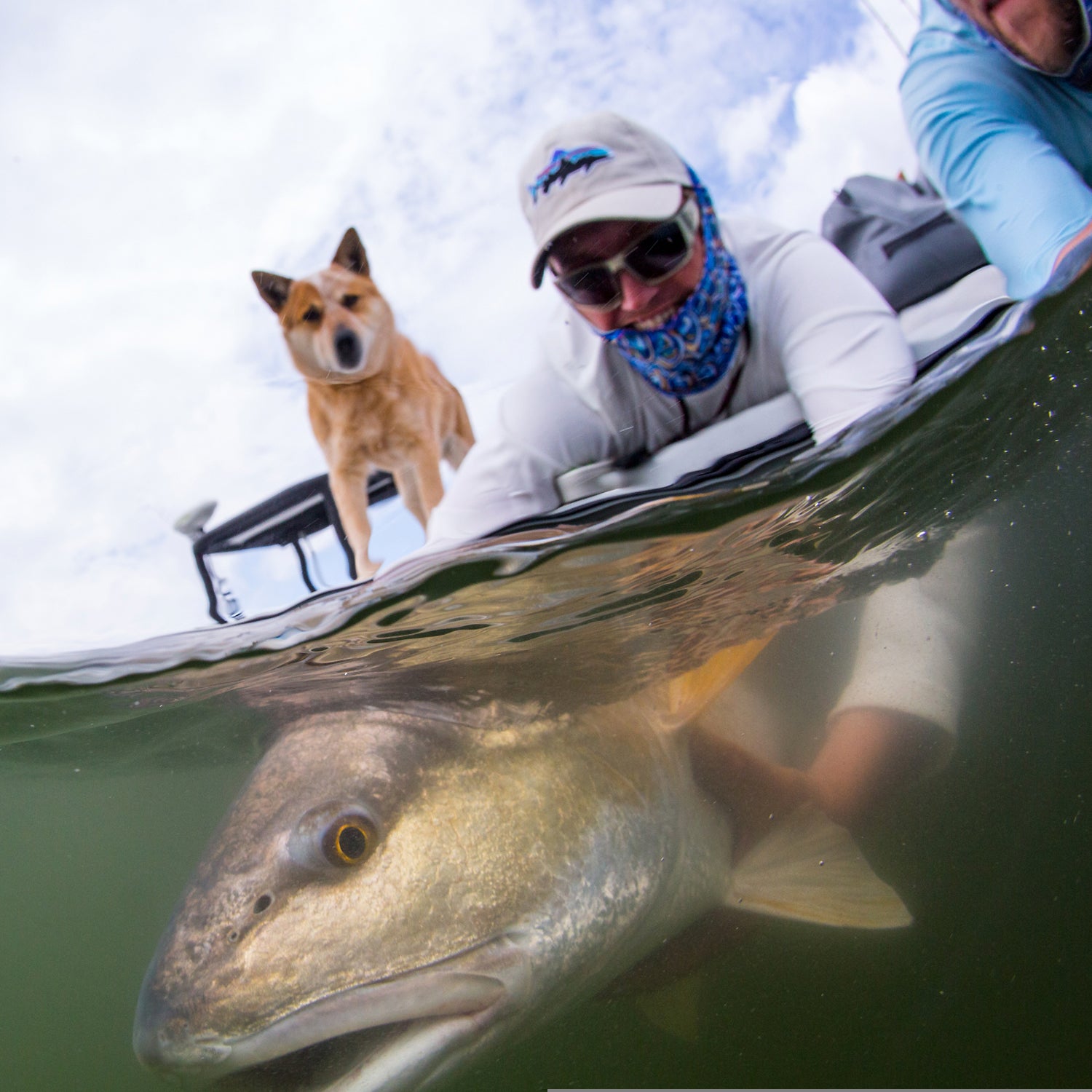The Pacific Northwest, where I live, has had an exceptionally warm,��dry summer, which is why there are so many enormous forest fires raging up here right now. I’d like things to go back to the wetter, cooler normal, but in the meantime, I’ve taken the opportunity to test some hot-weather gear. More specifically, I’ve been using two different sun shirts nearly every day this summer to see how their designs stack up.��
One shirt is part of Columbia’s Omni-Shade Sun Deflector line, which will come out next spring and uses the brand’s��new��propriety sun-blocking technology. The other is , a more traditional sun shirt made from a tightly woven polyester��that’s been around for years. Read on to see how well they’ve worked.
The Test
I honestly lost count of the days I spent in the Tropic Comfort II Hoodie. I took it up Mount��Shasta, used it while sitting in a raft during 24-hour swiftwater rescue shifts, and also had it on while drinking beers on my deck in Ashland, Oregon.
I didn’t get my hands on the Omni-Shade Sun Deflector piece until later in the summer, but I still took it on a four-day surf trip to Baja, then used it to build a deck in my backyard. I didn't wear sunscreen under my shirt during either test.��
Columbia Omni-Shade Sun Deflector ($60)

The Technology
Each piece in the Omni-Shade Sun Deflector line is covered with dots of titanium dioxide, a common ingredient used in mineral��sunscreens. Titanium dioxide keeps the sun away by deflecting��the sun’s rays instead of absorbing them like some other protective technologies. And if the rays are being deflected, they can’t penetrate the garment, which keeps you from getting sunburned��and also��cuts some of the sun's heat. ��“Omni-Shade Deflector is designed to keep you both cool and protected,”��said Haskell Beckham, Columbia’s senior director of apparel innovation.
The Results
I did not get sunburned in this UPF 50 shirt, even after seven hours��in direct beach sunlight. So��yes, it works, but it also needs some improvements.
The outer layer of the Omni felt like latex.��My wife described the outside best when she said, “This feels like a Halloween costume you would have worn as a kid.” As a result, the shirt did not breathe��well. I got sweaty quite fast, which was uncomfortable while playing or working. For me��a sun shirt needs to protect and breathe��or it just becomes a regular shirt.
The exterior also had a sheen that screamed “tech,” which is fine when you’re climbing a mountain or fishing from a boat, but isn’t��ideal for everyday use. And I wanted a hood to protect my ears and neck, which are often the first to burn. I reached out to Columbia and they said there will be a hooded option for women this spring, and a men’s option with a hood in seasons to come. There will also be more breathable options that are better for high-output activities.��
The Verdict
If you are looking to escape the most extreme sun but are not moving around a ton—say during a fishing trip—this shirt delivers.��
Patagonia Tropic Comfort Hoody II ($60)

The Technology
When I called Ryan Thompson, the materials innovation and development manager at Patagonia, to talk about the Tropic Comfort II, which is also rated UPF 50, he pointed out that any garment can be made to protect against the sun. “In theory, if you wanted to you could market jeans or a rain jacket that are UPF 50, but that kind of defeats the purpose,” he said. “The real beauty is when you can create something that is lightweight and comfortable, airy and quick to dry, but also offers you that excellent sun protection.”��
The company tried to achieve that balance by making this��shirt out of a densely knit polyester that has enough threads per inch to block the sun,��but is thin enough to breathe and will help��pull moisture off your skin.��
The Results
I did not get burned in this shirt, either, even in the high alpine��or while sitting in a black raft in 111-degree heat. Would it protect me as well as the Columbia over 20 hours of sustained sun? I’m not sure, but it works plenty well for most daily pursuits.
I can also say that Patagonia did a great job of balancing sun protection with breathability. I noticed a marked difference between this shirt and the one from Columbia when I was moving around. I was still hot, thanks to the high temps, but never felt like my heat was trapped.
Finally, Patagonia nailed the details. The shirt has a hood, thumb holes so you can pull it over your hands, and Polygiene to cut down on stink. It looks a little dorky, especially with the hood up, but I was still plenty happy to wear it while hanging out with friends.
The Verdict
Patagonia has found the right balance of sun protection, breathability, and comfort with this shirt. May they never discontinue it.
The Bottom Line
To get an expert opinion on sun shirts, I called up , a dermatologist in Columbus, Ohio, who consults on product development. He said titanium dioxide is a proven technology and��when it’s applied to a shirt, “there is a possibility that you might be getting a little extra protection.”
However, he and several other dermatologists I’ve interviewed have also pointed out that the best sun protection is the sun protection you’re willing to use consistently. “What good is [a sun shirt] going to do if you aren’t going to wear it?” he said.
With that in mind, I think Columbia is onto something and I look forward to testing their more breathable options.��Until then, I’m going to stick with the Patagonia, and other products like it, that balance sun protection with wearability.


